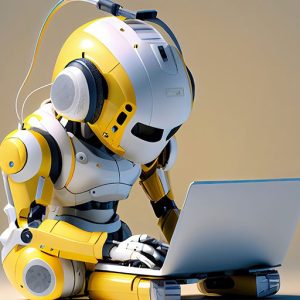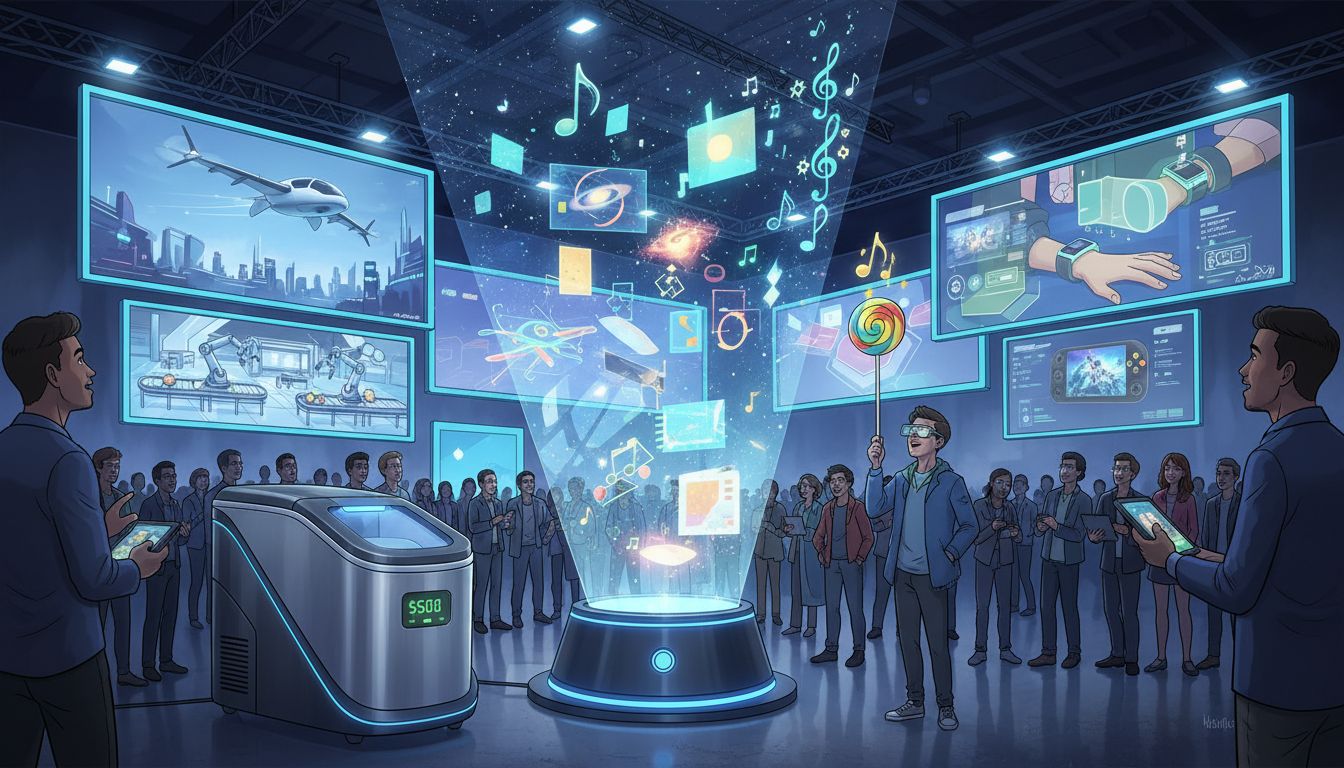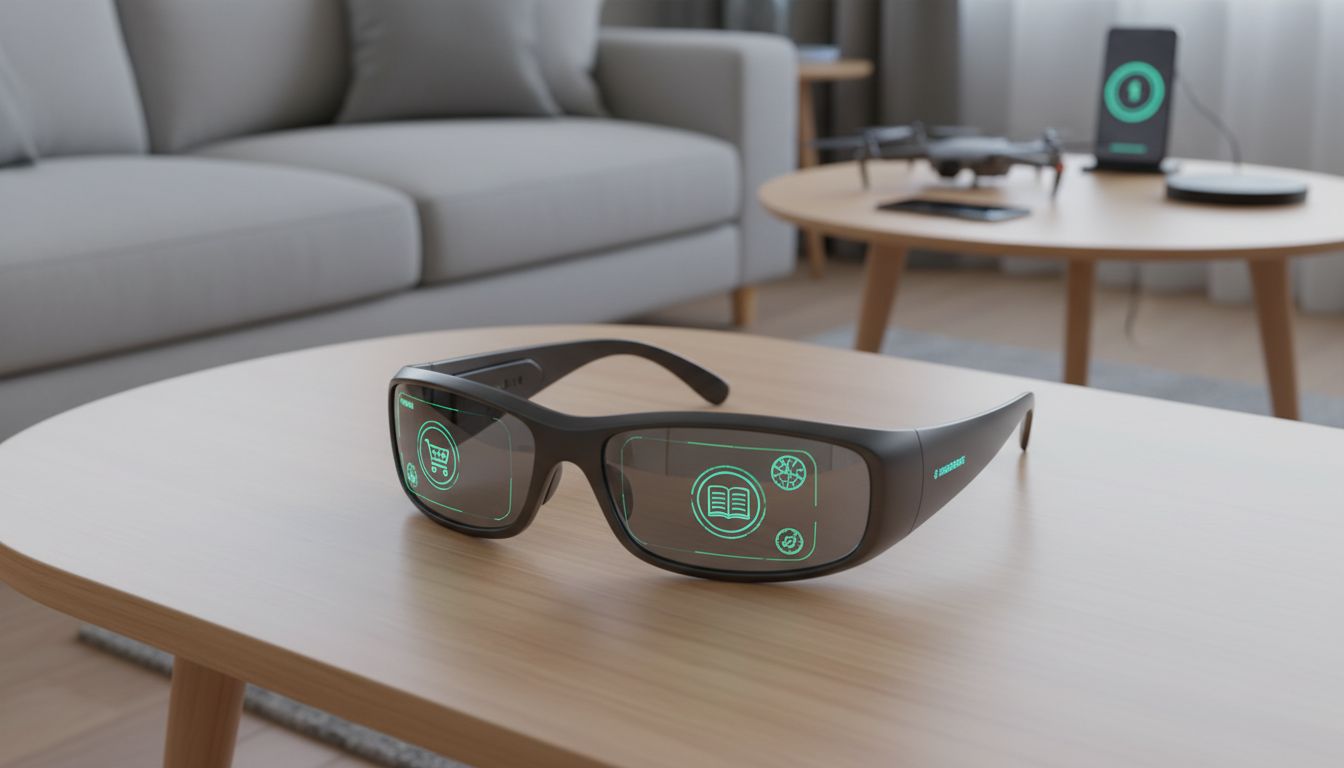In the rapidly evolving world of breaking AI tech, innovative solutions are constantly being developed to address various challenges across industries. As we delve into the latest advancements, it becomes apparent that artificial intelligence is reshaping our understanding and interaction with technology in unprecedented ways.
From revolutionizing agriculture through synecoculture and AI-assisted crop management to groundbreaking robotics and mobility enhancements like resilient artificial muscles for aerial robots or WORMS technology enabling lunar exploration, these breakthroughs demonstrate the limitless potential of cutting-edge AI research.
Moreover, large-scale language models such as ChatGPT have made significant strides in transforming industries while advanced techniques enable solving complex problems like the wall pursuit game. Finally, biocomputing technologies powered by human brain cells pave the way for future prospects in computing power alongside gecko-inspired robotic assistants designed for medical applications.
Join us as we explore these fascinating developments within breaking AI tech and gain insight into how they will shape our future landscape.
Table of Contents:
- Synecoculture and AI in Agriculture
- Mixed Plant Species Cultivation for Increased Yield
- AI-Assisted Management of Diverse Crops
- Synecoculture and AI in Agriculture
- Applications of Large-Scale Language Models
- Biocomputers Powered by Human Brain Cells
- Frequently Asked Questions Breaking Ai Tech
- Conclusion
Synecoculture and AI in Agriculture
Artificial intelligence is making waves in various industries, and agriculture is no exception. One groundbreaking farming method that has gained attention recently is Synecoculture, which involves growing mixed plant species together in high density to maximize yield and promote biodiversity.
Mixed Plant Species Cultivation for Increased Yield
In Synecoculture, multiple plant species are grown simultaneously on the same plot of land instead of using traditional monocropping methods. This technique not only augments harvest productivity, but also promotes a healthier natural environment by promoting natural pest control processes and lessening the need for chemical fertilizers or pesticides.
- Biodiversity: Growing diverse crops together enhances soil health, reduces erosion, improves water retention, and supports beneficial insects.
- Natural Pest Control: Mixed cropping systems can help deter pests by disrupting their life cycles or attracting predators that feed on them.
- Increased Resilience: Diverse agricultural ecosystems are more resilient to environmental stressors such as climate change or disease outbreaks compared to monocultures.
AI-Assisted Management of Diverse Crops
The complexities involved with managing different plant species within a single field can be challenging due to varying growth rates, nutrient requirements, and harvesting schedules among other factors. Nevertheless, AI has been developed to tackle this challenge – assisting farmers in making decisions regarding when to sow or harvest based on data collected from sensors positioned across their fields.
An example of an AI-driven platform designed for synecoculture is Plantix, which uses machine learning algorithms to analyze images of crops and provide farmers with information on plant health, nutrient deficiencies, or pest infestations. By leveraging AI technologies like these, farmers can optimize their operations while reducing the environmental impact of agriculture.
As AI technologies continue to evolve, they will be essential in helping us achieve our goals of providing global food security and sustainable agricultural practices.
Synecoculture and AI in Agriculture have enabled more efficient management of diverse crops, leading to higher yields. The advancements in robotics and mobility are taking the use of artificial intelligence even further with resilient artificial muscles for aerial robots as well as WORMS technology enabling lunar exploration.
Applications of Large-Scale Language Models
Large-scale language models, such as ChatGPT, are making waves in the world of artificial intelligence. These advanced AI systems have the potential to revolutionize various industries, from employment opportunities to education systems. In this section, we’ll discuss how ChatGPT is impacting different sectors and explore a breakthrough study that solved a nearly 60-year-old game theory dilemma called the wall pursuit game.
ChatGPT’s Impact on Various Industries
The applications of large-scale language models like ChatGPT are virtually limitless. For instance, they can be used for:
- Creative writing assistance: AI-powered tools can help writers generate ideas or even write entire articles with minimal human input.
- Customer service: Companies can leverage these models to create intelligent chatbots capable of handling complex customer queries efficiently and effectively.
- Educational purposes: Teachers and students alike can benefit from AI-generated content tailored specifically for their needs or skill levels.
- Mental health support: Large-scale language models could offer empathetic responses in mental health apps, providing users with immediate emotional support when needed.
Solving the Wall Pursuit Game Using Advanced AI Techniques
In a recent groundbreaking study by researchers at OpenAI and Stanford University, an advanced machine learning model was able to solve the long-standing problem known as the “wall pursuit game”. This mathematical puzzle has remained unsolved since its inception in 1963 and has significant implications for better reasoning about autonomous systems like driverless cars.
The wall pursuit game involves two players, a pursuer and an evader, who move along the edges of a grid. The goal is to determine whether the pursuer can catch the evader by blocking all possible escape routes. By using reinforcement learning algorithms combined with large-scale language models, researchers were able to devise optimal strategies for both players in various scenarios.
This research breakthrough illustrates the power of AI to tackle complex challenges that have been beyond human understanding for a long time. It also highlights the potential applications of AI in areas such as transportation safety, military strategy, and cybersecurity.
Large-scale language models have the potential to profoundly affect many areas, and it will be fascinating to observe their further development. Moving on, biocomputers powered by human brain cells offer a promising alternative for advanced AI technologies with potentially revolutionary implications in medical research.
Biocomputers Powered by Human Brain Cells
Researchers believe that this cutting-edge tech of a ‘biocomputer’ driven by human brain cells may soon be possible, even within our lifetime – something which would have been thought unimaginable in a sci-fi novel. Biocomputing technologies have the potential to exponentially expand modern computing capabilities and revolutionize various industries. In addition, scientists are also exploring the development of tiny robots inspired by geckos’ gripping ability and efficient locomotion, which could one day assist doctors during surgery procedures.
Future Prospects of Biocomputing Technologies
Researchers in the field of artificial intelligence are constantly pushing boundaries to create innovative solutions for complex problems. One such innovation is biocomputing – using living organisms or their components as computational devices. The idea behind biocomputers is to harness the incredible processing power and efficiency found in biological systems like the human brain.
- Potential applications: From advanced data storage solutions to real-time environmental monitoring, biocomputers offer numerous possibilities across diverse sectors including healthcare, agriculture, defense, and more.
- Ethical considerations: As with any emerging technology involving biological components or manipulation at cellular levels, ethical concerns must be addressed before widespread adoption can occur.
- Roadmap for development: Researchers continue working on overcoming technical challenges related to scalability and integration with existing electronic systems while simultaneously addressing safety concerns associated with these new technologies.
Gecko-Inspired Robotic Assistants in Medical Applications
In parallel with advancements in biotechnology-based AI innovations like biocomputers, scientists are also looking to nature for inspiration in developing advanced robotic systems. One such example is the creation of gecko-inspired robots that can mimic the remarkable gripping ability and efficient locomotion of these small lizards.
These tiny robots have several potential applications within medical settings:
- Surgical assistance: Gecko-like robots could be used to provide surgeons with precise control during delicate procedures, minimizing tissue damage and reducing patient recovery times.
- In-body diagnostics: Equipped with cameras or sensors, these miniature machines could navigate through a patient’s body non-invasively, providing real-time data on internal conditions without requiring invasive diagnostic techniques.
- Drug delivery: By attaching drug-loaded nanoparticles to their adhesive feet, gecko-inspired robots may offer targeted drug delivery options for treating localized diseases or infections more effectively than traditional methods.
The development of biocomputing technologies powered by human brain cells and gecko-inspired robotic assistants exemplifies how artificial intelligence continues breaking new ground across various fields. As researchers work towards overcoming technical challenges and addressing ethical concerns surrounding these innovations, we can expect even more exciting breakthroughs in AI technology in the near future.
Frequently Asked Questions Breaking Ai Tech
What is the negative impact of AI technology?
The negative impacts of AI technology include potential job displacement, increased surveillance and privacy concerns, and exacerbating social inequalities. Additionally, biased algorithms can perpetuate discrimination in areas such as hiring practices or criminal justice systems. It’s essential to address these issues through responsible development and deployment of AI technologies.
Why is AI such a controversial topic?
AI is controversial due to its transformative nature that brings both benefits and challenges. While it has the potential to revolutionize industries by improving efficiency, accuracy, and productivity, it also raises ethical concerns related to privacy, security, bias in decision-making processes, job loss fears for certain sectors like manufacturing or customer service jobs (Brookings Institution). Balancing these factors contributes to the ongoing debate surrounding AI.
What is the biggest threat of AI?
The biggest threat posed by artificial intelligence lies in its misuse or unintended consequences. This includes deploying biased algorithms leading to unfair decisions (Nature) or weaponizing autonomous systems for military purposes (Future of Life Institute). Ensuring ethical guidelines are followed during development will help mitigate these risks while maximizing the positive aspects of this powerful technology.
Conclusion
As we have seen, the advancements in breaking ai tech are rapidly evolving. From synecoculture and AI in agriculture to biocomputers powered by human brain cells, these technologies will be instrumental in shaping our future. Staying abreast of new developments is essential to ensure we can make the most of them, while also considering ethical implications. We must also ensure that ethical considerations remain at the forefront when utilizing such powerful tools.






